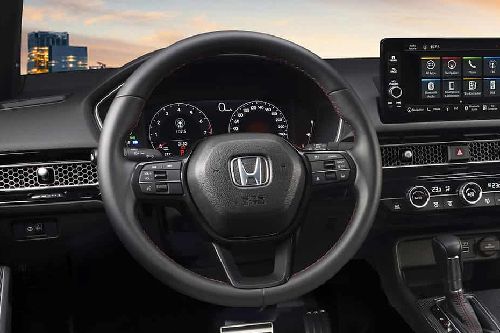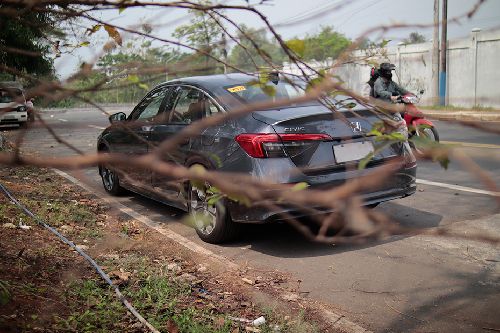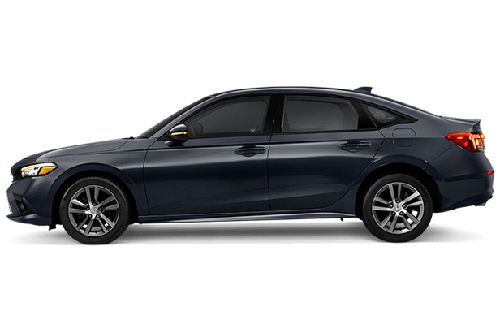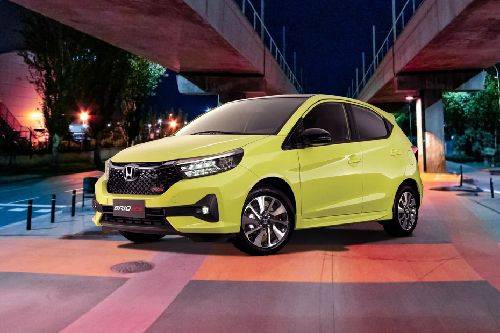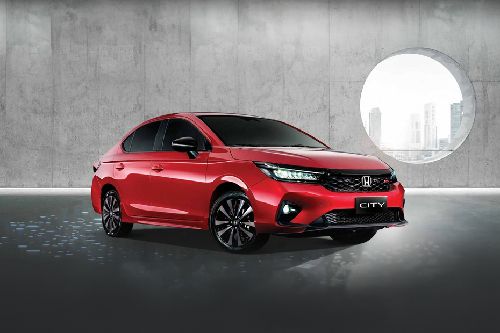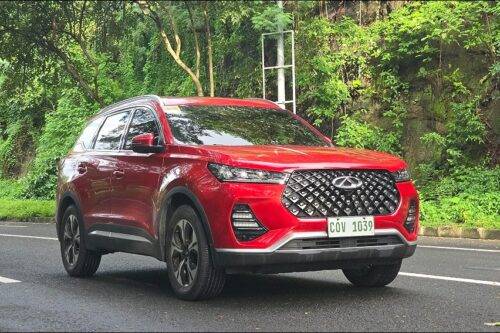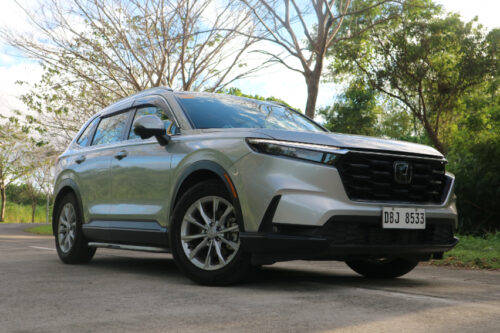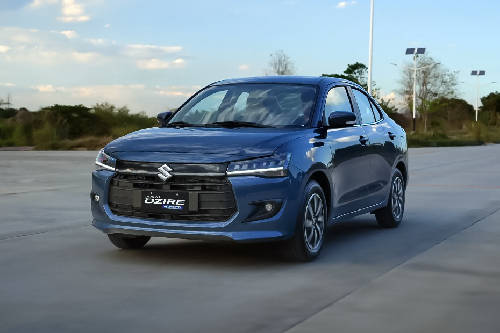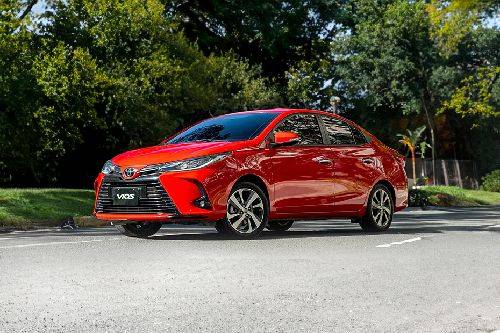History of the Honda Civic Type-R

The Honda Civic Type-R is a high-performance version of Honda's Civic, a compact car. The Type-R badge was first used on the Japanese domestic market (JDM) Civic in 1997, and it quickly became known for its high performance and track-ready capabilities. While not the first Honda model to receive the Type-R treatment and the now iconic red badge, it is the most popular and has carried on through different generations of the Civic.
KEY TAKEAWAYS
What is the current generation of the Honda Civic Type-R?
The Honda Civic Type-R is currently in it's sixth generation.Was the Honda Civic Type-R available in the Philippines?
Yes, the 5th-generation FK8 was and 6th-generation FL5 is available in the market.Is there an automatic transmission of the Honda CIvic Type-R and All-Wheel Drive?
The Honda Civic Type-R has always been available with a manual transmission only and only with Front Wheel Drive configuration.First generation (EK9)
The first-generation Honda Civic Type-R, also known as the EK9, was a high-performance version of the sixth-generation Honda Civic, manufactured between 1997 and 2000. The EK9 was exclusively sold in Japan, and it quickly gained a cult following among enthusiasts for its exceptional handling and performance.

One of the most notable features of the EK9 was its engine, a naturally aspirated 1.6-liter B16B inline-four that produced an impressive 182 horsepower at a screaming 8,200 rpm. At the time the engine made the most horsepower per liter from a naturally aspirated engine. The engine was mated to a close-ratio five-speed manual transmission, allowing for quick shifts and a thrilling driving experience. The EK9 also featured a limited-slip differential, which helped to improve traction and handling in tight corners.

The EK9's lightweight construction also contributed to its impressive performance. The car weighed just over 2,400 pounds, thanks to the extensive use of lightweight materials like aluminum and carbon fiber. The suspension was also tuned for maximum performance, with stiffer springs and shocks, larger anti-roll bars, and a lower ride height.

Inside, the EK9 was stripped down to the essentials. The car had no air conditioning or power windows, and the rear seats were removed to save weight. The front seats were Recaro racing seats, which provided excellent support during spirited driving. The dashboard was also redesigned, with a unique red and black color scheme and Type-R badging throughout.

The first generation Honda Civic Type-R, or EK9, was a groundbreaking performance car that set a new standard for front-wheel-drive performance. Its lightweight construction, high-revving engine, and exceptional handling made it a favorite among enthusiasts, and its reputation has only grown over time. The EK9 remains a sought-after collector's item to this day, and it will always be remembered as a true classic of the Honda lineup.
Second generation (EP3)
After the success of the first generation Civic Type-R, Honda felt the need to usher in the performance hatchback into the new millennium. In 2001, Honda introduced the third-generation Civic Type-R, based on the seventh-generation Civic (EP chassis). This was the first Civic Type-R to be officially sold outside of Japan, primarily in Europe, and it quickly became a popular choice for enthusiasts. It quickly gained a cult following for its high-revving engine, sharp handling, and bold styling.

This is also a coming-out party for the K20 engine, which is the base of Honda’s performance vehicles. Under the hood, the EP3 Type-R packs a naturally aspirated 2.0-liter inline-four engine dubbed the K20A that produces 215 horsepower and 202 Nm of torque. While those figures may not seem impressive by today's standards and are not as rev-happy as the previous B16 engine, it's important to remember that the EP3 was a lightweight and agile car, weighing in at just over 2,700 pounds. The engine is paired with a six-speed manual transmission, which has short, precise throws that make shifting a joy.

One of the defining characteristics of the EP3 Type-R is its handling. The car features a front-wheel-drive layout, which can be a challenge to manage in high-performance applications. However, Honda engineers managed to work their magic and create a chassis that is both agile and predictable. The car's suspension is stiff, but not punishing, and the steering is direct and communicative. These traits make the EP3 a blast to drive on twisty back roads or at the track.

The exterior design of the EP3 Type-R is also noteworthy. The car features a bold, aggressive look with a front fascia, a large grill and air intake, and a hood scoop that hints at the car's performance potential. The fenders are flared, giving the car a wider stance, and the rear spoiler provides both downforce and visual flair. Inside, the EP3 features a classic Honda interior, with a simple, driver-focused layout and high-quality materials.

While the EP3 Type-R was never officially sold outside of Japan and Europe, enthusiasts have found ways to import them and make them street-legal. The car's rarity and exclusivity have only added to its allure, and it has become a sought-after collector's item among Honda aficionados.
Third generation Japan (FD2) Euro (FN2)
Describing the 3rd-generation Civic Type-R is going to be a bit complicated considering that there were 2 very different models introduced for both the Japanese and European markets. The Euro Type-R, with chassis designation FN2 was more a traditional hot-hatch style while the more track-oriented FD2 used, for the first time ever a sedan body style.

The FN2 Civic Type-R was produced between 2007 and 2010 and was powered by a naturally aspirated 2.0-liter K20Z4 engine that produced 198 horsepower and 193 Nm of torque. It had a six-speed manual transmission and front-wheel drive. The FN2 was praised for its handling and agility, thanks to a stiff chassis and well-tuned suspension. It also had a unique styling that set it apart from other Civics, with a distinctive rear wing, futuristic, sharp front end, and aggressive body kit
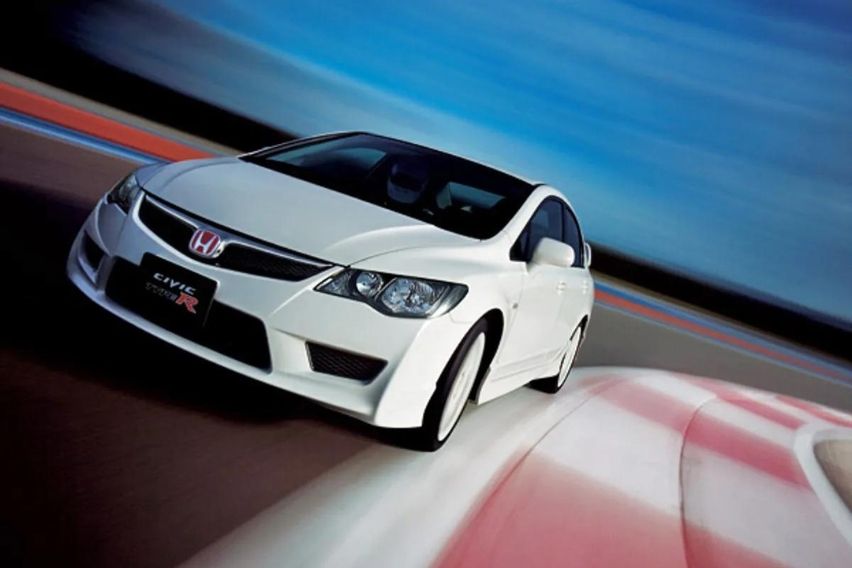
On the other hand, there’s the FD2 Civic Type-R produced at the same time and exclusively for the Japanese market. It carries the familiar 8th-generation Civic FD chassis that we all know and love, locally and it was powered by a naturally aspirated 2.0-liter K20A engine that produced 222 horsepower and 215 Nm of torque. It also had a six-speed manual transmission and front-wheel drive. The FD2 was known for its high-revving engine that delivered a thrilling driving experience. Its suspension was stiffer than the FN2, which made it a bit less comfortable for daily driving but improved its performance on the track.

In terms of design, the FD2 and FN2 cannot be more apart, with the former having a sedan body and the latter a hot-hatch and the FD2 having a more understated look. It lacked the aggressive body kit and rear wing of the FN2, which some enthusiasts believe made the FN2 look fussy. The FD2 had a more refined interior with higher-quality materials and better sound insulation. These days the more desirable model is the Civic Type-R FD2 because of its hard-core track capabilities and the fact that it is the only one offered with the body of a 4-door sedan.
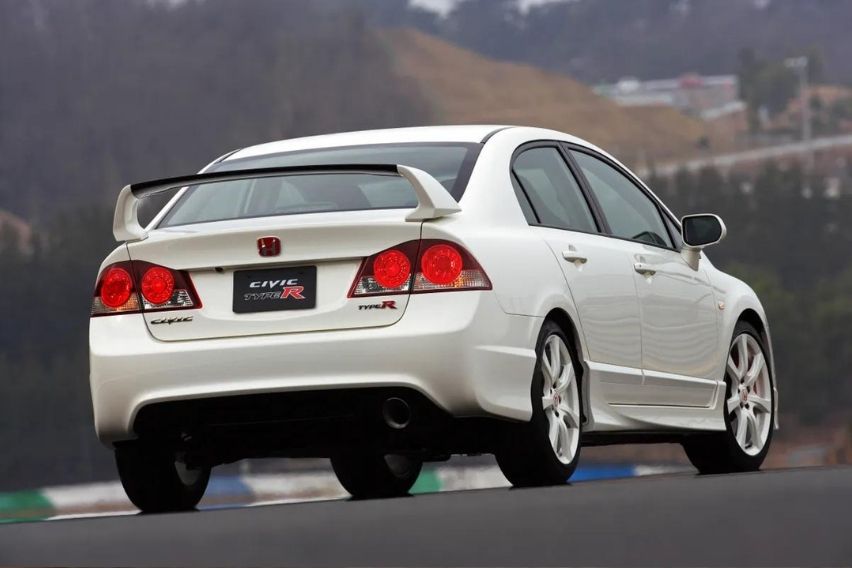
Fourth generation (FK2)
The FK2 Type-R, which was produced from 2015 to 2017 and based on the ninth-generation Honda Civic, might be one of the most overlooked models in the history of the Civic Type-R. Fans may have forgotten that this is actually the first Civic Type-R to come out of the factory with a turbocharged VTEC engine.

Previewed at the Geneva Motor Show in March 2014, the FK2 Type-R is powered by a highly-tuned K20C1 2.0-liter turbocharged engine, that produced an impressive 306 horsepower and 400 Nm of torque. This power is channeled through a six-speed manual transmission, providing a direct and engaging driving experience. The FK2 Type-R can accelerate from 0 to 100 km/h in just 5.7 seconds and making it the fastest Civic Type-R at the time.

But the FK2 Type-R isn't just about straight-line speed. It also features a specially-tuned suspension system that provides exceptional handling and agility. The car's front-wheel-drive layout may seem like a disadvantage compared to all-wheel-drive competitors, but the FK2 Type-R manages to make the most of it thanks to its advanced suspension and limited-slip differential. The car's precise steering and responsive chassis make it a joy to drive on twisty back roads, and it's equally at home on the track.

The FK2 Type-R also stands out from the crowd with its bold and aggressive styling. Its wide stance, aerodynamic body kit, and large rear wing all contribute to its sporty appearance. The car's interior is also designed with performance in mind, featuring heavily bolstered seats, a sport steering wheel, and a red-and-black color scheme.
Of course, the FK2 Type-R isn't perfect. Some reviewers have criticized its firm ride and noisy cabin, and its infotainment system is a bit outdated. But for drivers who prioritize performance and driving experience over creature comforts, the FK2 Type-R is hard to beat and became a precursor of what comes next for the Type-R badge.
Fifth generation (FK8)
The FK8 Civic Type-R, which was released in 2017 has skyrocketed the popularity of the model in the car community because it is the first Civic Type-R to be made available in multiple markets and not just in Japan and Europe. It has quickly gained a reputation as one of the best hot hatches on the market, thanks to its impressive performance and aggressive styling.

Under the hood, the FK8 Civic Type-R is powered by the same 2-liter turbocharged four-cylinder engine found in the FK2 Type-R and produces 306 horsepower and 400 Nm of torque. This power is sent to the front wheels through a six-speed manual transmission. The car can sprint from 0 to 100 km/h in just 5.0 seconds besting the previous generation.

The FK8 Civic Type-R handles exceptionally well thanks to its advanced suspension system. The car features a dual-axis strut front suspension and a multi-link rear suspension, which helps to minimize body roll and improve cornering performance. The Type-R also comes equipped with adaptive dampers, which can be adjusted to suit different driving conditions and styles.

One of the standout features of the FK8 Civic Type-R is its exterior design. The car has a bold and aggressive look, with a large rear wing, a front splitter, and side skirts. These aerodynamic elements not only enhance the car's appearance but also improve its performance by providing additional downforce and reducing drag.

Inside, the FK8 Civic Type-R has a sporty and well-appointed cabin. The car comes standard with supportive sports seats, a leather-wrapped steering wheel, and a 7-inch touchscreen infotainment system. The Type-R also features a number of advanced safety features thanks to Honda Sensing, which is the brand’s suite of active and passive safety features and includes adaptive cruise control, lane departure warning, and automatic emergency braking among others.
Sixth generation (FL5)
After 26 Years and multiple generations of innovation and performance, we’re now in the midst of what could be the best Civic Type-R yet. The FL5 Honda Civic Type-R is an evolution of the badge and features all the best that Honda can offer. The FL5 Type-R is a sleek, stylish, and powerful car that combines aesthetics with functionality to deliver an unmatched driving experience.

One of the most notable features of the FL5 Type-R is its aerodynamic design, which is optimized to reduce drag and maximize downforce. The car's body has been sculpted to reduce air resistance, while the front splitter, rear wing, and underbody diffuser work together to generate downforce and improve stability at high speeds. The result is a car that is not only fast but also agile and responsive.
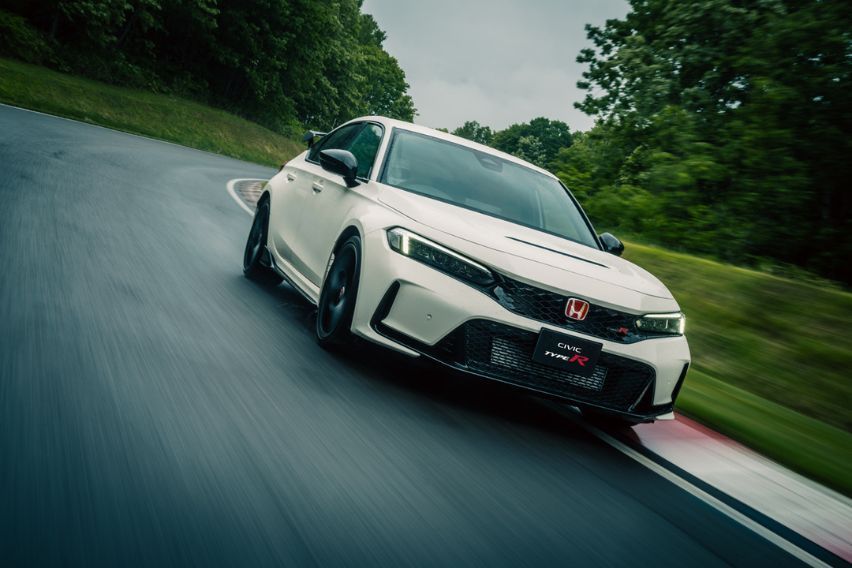
Under the hood, the FL5 Type-R is powered by a turbocharged 2.0-liter four-cylinder engine that produces an impressive 316 horsepower and 420 Nm of torque making it the most powerful Civic Type-R yet. The engine is paired with a six-speed manual transmission that delivers power to the front wheels. The car also comes with a limited-slip differential, which ensures that power is distributed evenly to both wheels, providing better traction and cornering ability.

The FL5 Type-R is equipped with a range of advanced features that enhance performance and safety. The car comes with a three-mode drive system that allows drivers to choose between Comfort, Sport, and +R modes. Each mode adjusts the car's throttle response, suspension, and steering to provide the desired driving experience. The car also features a high-performance braking system with Brembo calipers, which provide excellent stopping power and fade resistance.

Inside the car, the FL5 Type-R is designed with the driver in mind. The dashboard is centered around a 7-inch touchscreen display that provides access to the car's infotainment system. The system includes features such as Apple CarPlay, Android Auto, and a premium audio system. The car also comes with a range of driver-assist features, including adaptive cruise control, lane departure warning, and forward collision warning.

In terms of safety, the FL5 Type-R has received top ratings from the National Highway Traffic Safety Administration (NHTSA) and the Insurance Institute for Highway Safety (IIHS). The car comes with a range of standard safety features, including a rearview camera, automatic emergency braking, and a comprehensive airbag system, thanks to improved Honda Sensing technology.

The FL5 Type-R is a high-performance sports car that combines style, performance, and advanced technology to deliver an unparalleled driving experience. With its aerodynamic design, powerful engine, advanced features, and top-rated safety, the FL5 Type-R is a car that is sure to b turn heads and impress drivers.
From its humble beginnings as a souped-up Honda Civic to becoming a legitimate track monster, the Honda Civic Type-R is a testament to Honda’s racing heritage and engineering. Honda delivers in bringing power to the masses and proving that even a lowly econobox can beat even the most powerful supercars, horsepower to horsepower. The future is bright for the Honda Civic Type-R thanks to advancements in electrification technology and no one knows exactly what the next Type-R would be like but one thing is for sure, the red badge will continue to become a symbol of performance and the democratization of speed.
Photos from: Honda
Sell your car at the best price
 Verified and genuine buyers
Verified and genuine buyers
-
Explore Honda Civic
Honda Car Models
Don't Miss
Trending & Fresh Updates
- Latest
- Popular
You might also be interested in
- News
- Featured Stories
Honda Featured Cars
- Latest
- Upcoming
- Popular
Compare & Recommended

|

|

|

|

|
|
Length
4678 mm
|
4598 mm
|
4660 mm
|
4630 mm
|
4700 mm
|
|
Width
1802 mm
|
1826 mm
|
1795 mm
|
1780 mm
|
1850 mm
|
|
Height
1415 mm
|
1425 mm
|
1445 mm
|
1435 mm
|
1432 mm
|
|
Power
176
|
148
|
153
|
138
|
168
|
|
Torque
240 Nm
|
250 Nm
|
200 Nm
|
153 Nm
|
270 Nm
|
|
Automatic Climate Control
Yes
|
Yes
|
Yes
|
No
|
No
|
|
Rear A/C Vents
Yes
|
Yes
|
Yes
|
No
|
-
|
|
Keyless Entry
Yes
|
Yes
|
Yes
|
Yes
|
Yes
|
|
Multi-function Steering Wheel
Yes
|
Yes
|
Yes
|
No
|
Yes
|
|
Adjustable Seats
Yes
|
Yes
|
Yes
|
Yes
|
Yes
|
|
|
Trending Sedan
- Latest
- Upcoming
- Popular
Honda Civic Car Articles From Carmudi
- journal









